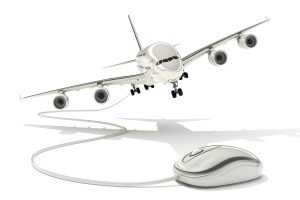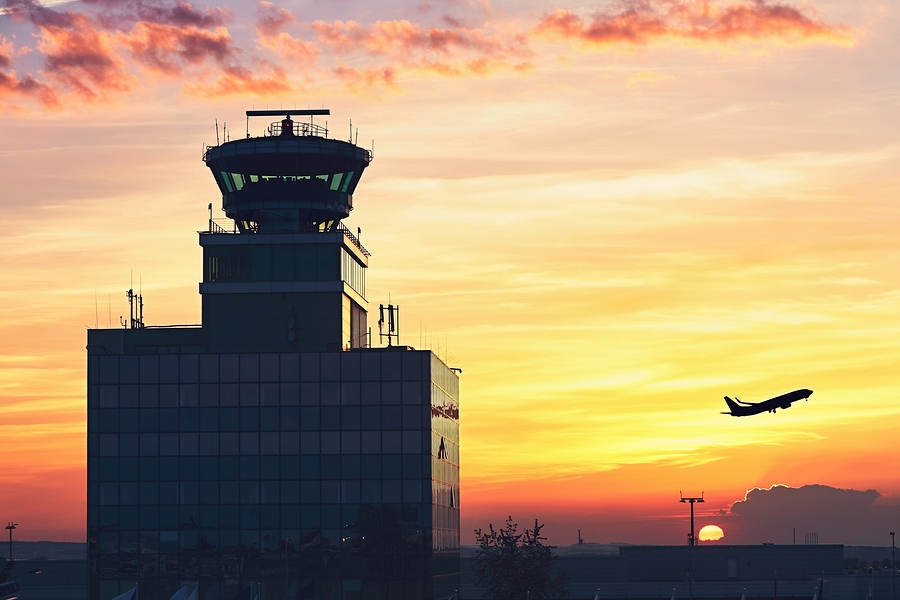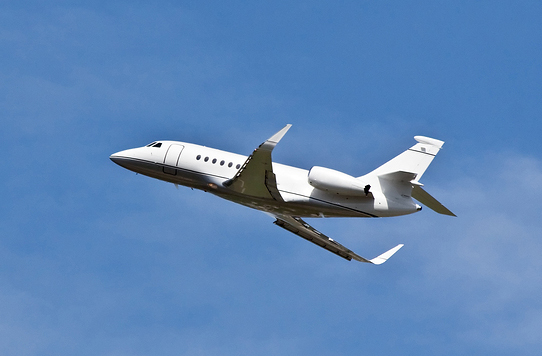The clock is ticking for thousands of aircraft in the United States that have not yet gotten the necessary upgrades to meet the compliance standards of Automatic Dependent Surveillance-Broadcast (ADS-B), a new surveillance technology used for air traffic control. The January 2020 deadline is fast-approaching, but many aircraft owners are unsure of whether to make the leap.
The cost of upgrading to meet the new program’s standards can be steep, particularly for older aircraft that lack much of today’s modern tracking technology. Few options for selling jets and values that sit far below the cost of compliance may force many jet owners to retire their aircraft.
What is ADS-B?
ADS-B is a new air traffic surveillance system implemented by the Federal Airline Administration (FAA) to replace radar technology. The system has been designed to improve safety and efficiency in the air, reduce costs, and minimize the environmental impacts of flying. ADS-B is the FAA’s attempt to modernize air traffic control and improve the safety of pilots and their passengers.
Beginning January 2020, all aircraft must be equipped with ADS-B Out systems to fly in most controlled airspace. ADS-B Out provides the ability to transmit flight data to air traffic controllers and other aircraft equipment with ADS-B In, the counterpart system.
ADS-B In is not required for compliance, but the FAA encourages it to allow pilots to utilize all the benefits of the system, including weather and traffic pattern updates.

Options for owners
Although upgraded tracking systems stand to benefit the aviation industry, the FAA-mandated compliance requirements are troublesome to many aircraft owners, particularly those who own smaller aircraft such as private jets.
Cost is the major issue. For older aircraft with outdated systems, the cost of upgrading to ADS-B standards could cost owners $90,000 or more. This cost includes the need for new transponders, GPS receivers, antennas and other equipment. Newer jets may be able to trim these costs significantly, but the expense may still outweigh the value of some smaller jets. Downtime expenses are also a factor for jet owners that lease their aircraft out as a revenue stream.
 The cost of not upgrading may be just as steep. Without being ADS-B compliant, aircraft will not be allowed to fly in controlled airspace. This puts a damper on many aircraft and their capabilities. If jets need to fly into this airspace regularly, the owners face a difficult choice: upgrade or retire.
The cost of not upgrading may be just as steep. Without being ADS-B compliant, aircraft will not be allowed to fly in controlled airspace. This puts a damper on many aircraft and their capabilities. If jets need to fly into this airspace regularly, the owners face a difficult choice: upgrade or retire.
Selling old aircraft at this time isn’t easy. With the FAA deadline looming over their heads, aircraft buyers are thinking to the future and purchasing already compliant aircraft. This leaves aircraft owners with the option to scrap their jets to earn back some of their investment.
If you are the owner of a private aircraft that is not yet ADS-B compliant, now is the time to weight your options. If you choose not to upgrade, you may still be able to sell your aircraft, so call an experienced aircraft broker and learn more about your options in the market.
[et_pb_section bb_built=”1″ fullwidth=”on” specialty=”off” background_image=”https://www.l-lint.com/wp-content/uploads/2016/03/slider_1_1.jpg” transparent_background=”off” allow_player_pause=”off” inner_shadow=”off” parallax=”off” parallax_method=”off” padding_mobile=”off” make_fullwidth=”off” use_custom_width=”off” width_unit=”on” make_equal=”off” use_custom_gutter=”off” custom_padding_tablet=”50px|0|50px|0″ custom_padding_last_edited=”on|desktop”][et_pb_fullwidth_header title=”CORPORATE JET INSIDER” background_layout=”light” text_orientation=”center” header_fullscreen=”off” header_scroll_down=”off” background_url=”https://www.l-lint.com/wp-content/uploads/2016/03/slider_1_1.jpg” background_overlay_color=”rgba(255,255,255,0.82)” parallax=”off” parallax_method=”off” content_orientation=”center” image_orientation=”center” custom_button_one=”off” button_one_letter_spacing=”0″ button_one_use_icon=”default” button_one_icon_placement=”right” button_one_on_hover=”on” button_one_letter_spacing_hover=”0″ custom_button_two=”off” button_two_letter_spacing=”0″ button_two_use_icon=”default” button_two_icon_placement=”right” button_two_on_hover=”on” button_two_letter_spacing_hover=”0″ background_image=”https://www.l-lint.com/wp-content/uploads/2016/03/slider_1_1.jpg” /][/et_pb_section][et_pb_section bb_built=”1″ admin_label=”section”][et_pb_row admin_label=”row” background_position=”top_left” background_repeat=”repeat” background_size=”initial”][et_pb_column type=”3_4″][et_pb_post_title title=”on” meta=”on” author=”off” date=”on” categories=”on” comments=”off” featured_image=”off” featured_placement=”below” parallax_effect=”on” parallax_method=”off” text_orientation=”left” text_color=”dark” text_background=”off” text_bg_color=”rgba(255,255,255,0.9)” module_bg_color=”rgba(255,255,255,0)” title_all_caps=”off” use_border_color=”off” border_color=”#ffffff” border_style=”solid” background_color=”rgba(255,255,255,0)” parallax=”on” /][et_pb_text background_layout=”light” _builder_version=”3.0.85″]
 Global economic growth in 2017 was at its strongest since 2011. As consumers continue to grow more confident and more have expendable income, the number of commercial airline passengers is also likely to increase. In fact, the International Air Transport Association (IATA) expects a nearly 6% rise in passenger numbers to 4.3 billion in 2018. This will, in turn, drive demand for private jets, and those in the private aviation industry will need about 21,000 jets to keep up. This is good news for business and private aviation growth, but what do these numbers mean for individuals or company leaders looking to purchase or sell jets?
Global economic growth in 2017 was at its strongest since 2011. As consumers continue to grow more confident and more have expendable income, the number of commercial airline passengers is also likely to increase. In fact, the International Air Transport Association (IATA) expects a nearly 6% rise in passenger numbers to 4.3 billion in 2018. This will, in turn, drive demand for private jets, and those in the private aviation industry will need about 21,000 jets to keep up. This is good news for business and private aviation growth, but what do these numbers mean for individuals or company leaders looking to purchase or sell jets?
More people flying private
The first thing to note is that more individuals are choosing to fly private. Argus International TRAQPak data showed business aircraft activity in the U.S. and Canada continuing to increase year over year in March 2018. Activity for large-cabin jets was up 4.7%, and midsize jets also saw a 4.4% year-over-year increase. In addition, charter activity also increased by 7.7%. These increases are due, in part, to a significant surge in first-time private flyers, including more first-time jet owners. Another factor that’s spurred this increase is charter companies offering more flexible pricing and scheduling models, leading industry analysts to predict a future rise in the number of individuals who want to fly privately but can’t afford to purchase.

Pre-owned versus new markets — and their caveats
This upswing in private and business aviation is good news for manufacturers — and those in the pre-owned market. With aircraft demand up overall, more jet buyers are looking at pre-owned models rather than waiting for new aircraft deliveries that are still years away. The 100% expensing option for used aircraft under the federal tax overhaul will likely give the market a boost as well.
However, as pre-owned aircraft sales climb, jet brokers’ inventories are also falling off and were down to 9.4% of the business jet fleet in March 2018. Although the market swung to favor sellers in February of the same year, market prices have now stabilized, giving buyers reason to purchase. With such limited inventories and a stable market, those who are holding off in hopes of further price reductions may want to rethink their plans — or end up risking a very long wait.
Off-market aircraft
Of course, those who are ready to buy but not finding what they’re looking for can search off market. Off-market aircraft includes inventory that owners are not actively listing or advertising but may be willing to sell for the right price. However, this “off-market” definition could apply to 99% of the pre-owned business jet fleet. Although buyers may be pleased about the increase in the pool of aircraft potentially available for sale, off-market transactions very often lack transparency. Without listings, it’s difficult for potential buyers to know their options or compare aircraft features and prices. Therefore, in off-market deals, it’s important to involve a broker who can invest time investigating the aircraft to avoid problems during or, worse, after the transaction.
ADS-B Out compliance
 One of those potential problems and another factor shaking up jet market dynamics is the looming 2020 ADS-B Out compliance deadline. With approximately 46% of the pre-owned business jets available on the market being more than 20 years old and the deadline fast approaching, installing ADS-B equipment can be time- and cost-prohibitive for many would-be buyers. This will likely leave many owners of aging aircraft grounded unless they purchase already-upgraded jets or buy new. And for those still planning to buy used, ADS-B homework will be necessary to acquire an aircraft that has the mandated upgrades to fly after 2020.
One of those potential problems and another factor shaking up jet market dynamics is the looming 2020 ADS-B Out compliance deadline. With approximately 46% of the pre-owned business jets available on the market being more than 20 years old and the deadline fast approaching, installing ADS-B equipment can be time- and cost-prohibitive for many would-be buyers. This will likely leave many owners of aging aircraft grounded unless they purchase already-upgraded jets or buy new. And for those still planning to buy used, ADS-B homework will be necessary to acquire an aircraft that has the mandated upgrades to fly after 2020.
Today’s private and business jet market is a tricky landscape with so many factors affecting both new and pre-owned jets. Those wanting to purchase or sell jets should take heed and seek help from a professional who understands and knows how to navigate the market — and is willing to go the extra mile to get the best deal.
[/et_pb_text][/et_pb_column][et_pb_column type=”1_4″][et_pb_sidebar orientation=”right” area=”sidebar-1″ background_layout=”light” remove_border=”off” show_border=”off” /][/et_pb_column][/et_pb_row][/et_pb_section]
The 2008 financial crisis created what many in the private and business aviation industry view as a “lost decade” with slow sales and decreased flight numbers. They liken the current situation to the lost decade that occurred between 1986 and 1996 when business jet deliveries fell off at about 350 aircraft annually. According to an AIN Online article, Jon Raviv, U.S. aerospace and defense senior equity analyst at Citi Research, said overproduction of aircraft in the 2000s created a “shadow” pre-owned inventory which “cannibalized” the market for new jet demand this decade.
The end of an era?
But the light and midsize jet market may be nearing the end of the lost decade. Raviv expects recovery to be slow — with sales in these sectors remaining flat at an average of 444 deliveries per year. Although the economy is stabilizing and the jet market has adjusted to demand, some corporate leaders are still skittish, so it will likely take time to get back to prerecession numbers.
While the light and midsize jet market appears to be poised for an upswing, the large-cabin jet market may be on the verge of its own lost decade. Over the past 10 years, jet deliveries in this segment surpassed demand, creating a glut of inventory and driving prices down. However, new Gulfstream and Bombardier models soon to hit the market may help lessen the impact.
Another factor contributing to slow aircraft sales is the fact that other private and business flight options — charters, memberships and fractional ownership — are quickly gaining popularity.
A good time to buy?
 Although jet sales are down, aircraft manufacturers have been slow to catch on. Though some manufacturers have cut back a bit, there is still a large excess of jets available. This is driving deep discounts on new jets and fueling a price decrease on pre-owned jets. In fact, pre-owned private aircraft prices were down 16% year over year in August 2017. Case in point: A 5-year-old plane sold in 2016 was worth just 56% of its original price, down from 2012’s 64% value on jets half a decade old. This is a boon for buyers as jet brokers are offering great deals, enticing them to purchase new and pre-owned jets.
Although jet sales are down, aircraft manufacturers have been slow to catch on. Though some manufacturers have cut back a bit, there is still a large excess of jets available. This is driving deep discounts on new jets and fueling a price decrease on pre-owned jets. In fact, pre-owned private aircraft prices were down 16% year over year in August 2017. Case in point: A 5-year-old plane sold in 2016 was worth just 56% of its original price, down from 2012’s 64% value on jets half a decade old. This is a boon for buyers as jet brokers are offering great deals, enticing them to purchase new and pre-owned jets.
But many experts believe things are starting to look up for aircraft sales. With Gulfstream and Bombardier releasing their new jets — the G500 and G600 as well as the Global 7000, respectively — in the coming months, many believe sales activity will begin to slowly and steadily pick up. It’s difficult to predict how quickly the market will rebound, but for the time being, buyers are likely to get their hands on some tremendous bargains on both new and pre-owned aircraft.
This is a great market for aircraft buyers. Prices are down, there’s an abundance of new and used aircraft available, and it’s affordable to customize and update aircraft. Still, buying an aircraft is a huge commitment, and many buyers want to know whether they should hire aircraft brokers or try to make their purchases alone.
How an aircraft broker can help
An aircraft broker’s job is to help you find the right aircraft to meet your needs. The ideal broker offers benefits, including:
- Insight into the aircraft market — A good aircraft broker will have access to a global network of resources for finding the right aircraft. This includes off-market aircraft that might never be listed in sales databases.
- Technical expertise — Aircraft brokers have the knowledge and resources to conduct available aircraft inspections and evaluations, according to the Business Jet Traveler article. This includes inspecting flight and maintenance logs as well as evaluating available jets’ physical conditions.
- Historical knowledge — True aircraft brokers know the market, including influences and fluctuations that have taken place over time. This historical knowledge allows them to recognize values and negotiate sales based on market changes.
- Transactional skills — Buying an aircraft is not an easy task. It usually involves financing, complicated contracts, price negotiations, and sales or use tax considerations. A good broker will have the skills to navigate these transactional details.
Dangers of hiring the wrong broker
A reputable aircraft broker can help you find the right aircraft and successfully negotiate the deal. However, not everyone who claims to be an aircraft broker is reputable. There is no legislation that governs brokering aircraft outside of voluntary aircraft broker certifications through organizations like the National Aircraft Reseller Association.
 Message board threads and legitimate aircraft brokers’ websites relay horror stories in regard to improperly handled deals and scams. It’s best to get referrals from people who have purchased aircraft or from trusted professionals in the industry — and always check references. Hiring an aircraft broker can be the best path to jet ownership that meets your needs, but it’s important that you’re diligent in picking a professional and reputable broker.
Message board threads and legitimate aircraft brokers’ websites relay horror stories in regard to improperly handled deals and scams. It’s best to get referrals from people who have purchased aircraft or from trusted professionals in the industry — and always check references. Hiring an aircraft broker can be the best path to jet ownership that meets your needs, but it’s important that you’re diligent in picking a professional and reputable broker.
Do you have an aircraft you want to sell? Or are you in the market to buy one? Going through either a sale or purchase without the benefit of a good aircraft broker could be more difficult and time-consuming than you imagine. Contracts can be complicated and there are important legal and tax ramifications to take into consideration — especially if you’re buying or selling internationally. So, how do you find a great aircraft broker?
Finding reputable brokers
Finding a reputable aircraft broker isn’t easy. To find a good broker, you’ll need to do some homework.
- Look for an aircraft broker with professional presence. These brokers will have websites, social media pages, and listings in business directories. They’ll highlight the length of time they’ve been in business, and, in most cases, that’s a good indicator of their business practices.
- Ask your colleagues and friends. There’s no better recommendation than a happy customer. Ask people you know and trust to recommend brokers they’ve used. Also, be sure to ask if they experienced any frustrations with their relationships.
- Reach out to brokers to get a feel for their responsiveness. Some brokers are competitive and unwilling to share even the most basic information with anyone who hasn’t signed a contract for representation. Call several brokers to see if anyone you speak to strikes you as helpful, honest, and personable. Be sure to ask those you talk to about their fee structures and transaction processes so you can begin to understand how — and why — they work.
- Check references. Reputable brokers will happily provide reference lists, and you can speak with references to find out how quickly each broker responds, how hard the broker works to meet your needs, and answers to any questions you might have about the broker.
- Ask about fee structure. Aircraft brokers are paid much like real estate agents: when the sale is complete. Ask potential brokers whether the buyer or seller pays their fees and if you can get an itemized fee list. It’s also important to ask about possible conflicts of interest to learn whether the broker is also representing the seller or if the broker might have vested interest — and receive increased commission — when you buy a specific aircraft or from a certain dealer.
Resources for finding trustworthy brokers
 There are no federal regulations governing aircraft brokers, but there are voluntary certification programs that help separate good aircraft brokers from the bad. The National Aircraft Reseller Association has an aircraft broker certification program that includes a code of ethics that brokers must agree to when becoming certified. The National Business Aviation Association doesn’t have a certification program, but the group does have a services directory where you can find brokers as well.
There are no federal regulations governing aircraft brokers, but there are voluntary certification programs that help separate good aircraft brokers from the bad. The National Aircraft Reseller Association has an aircraft broker certification program that includes a code of ethics that brokers must agree to when becoming certified. The National Business Aviation Association doesn’t have a certification program, but the group does have a services directory where you can find brokers as well.
It may take some time to find the right broker, but, in the end, it’ll be worth it. A good broker can help you find the aircraft you need or sell your existing aircraft for the best price. Take the time to research aircraft brokers and find one who has great references and a proven track record.


 The cost of not upgrading may be just as steep. Without being ADS-B compliant, aircraft will not be allowed to fly in controlled airspace. This puts a damper on many aircraft and their capabilities. If jets need to fly into this airspace regularly, the owners face a difficult choice: upgrade or retire.
The cost of not upgrading may be just as steep. Without being ADS-B compliant, aircraft will not be allowed to fly in controlled airspace. This puts a damper on many aircraft and their capabilities. If jets need to fly into this airspace regularly, the owners face a difficult choice: upgrade or retire.




 Message board threads and legitimate aircraft brokers’ websites relay horror stories in regard to improperly handled deals and scams. It’s best to get referrals from people who have purchased aircraft or from trusted professionals in the industry — and always check references. Hiring an aircraft broker can be the best path to jet ownership that meets your needs, but it’s important that you’re diligent in picking a professional and reputable broker.
Message board threads and legitimate aircraft brokers’ websites relay horror stories in regard to improperly handled deals and scams. It’s best to get referrals from people who have purchased aircraft or from trusted professionals in the industry — and always check references. Hiring an aircraft broker can be the best path to jet ownership that meets your needs, but it’s important that you’re diligent in picking a professional and reputable broker. There are no federal regulations governing aircraft brokers, but there are voluntary certification programs that help separate good aircraft brokers from the bad. The National Aircraft Reseller Association has an
There are no federal regulations governing aircraft brokers, but there are voluntary certification programs that help separate good aircraft brokers from the bad. The National Aircraft Reseller Association has an